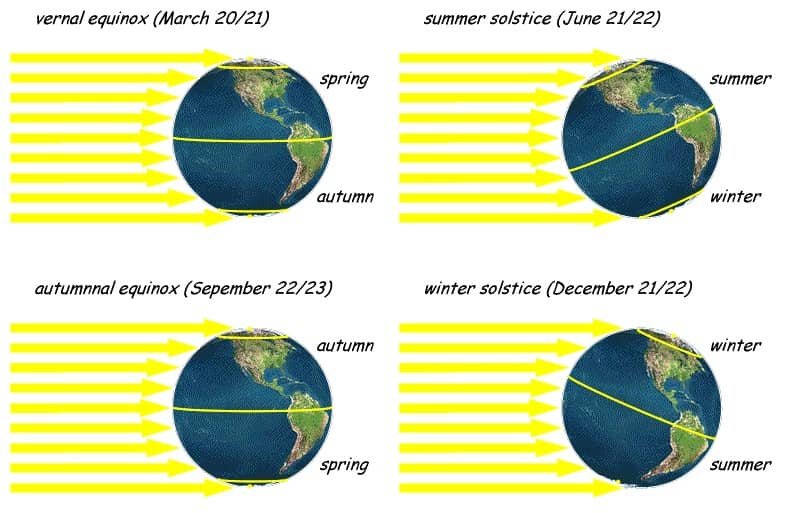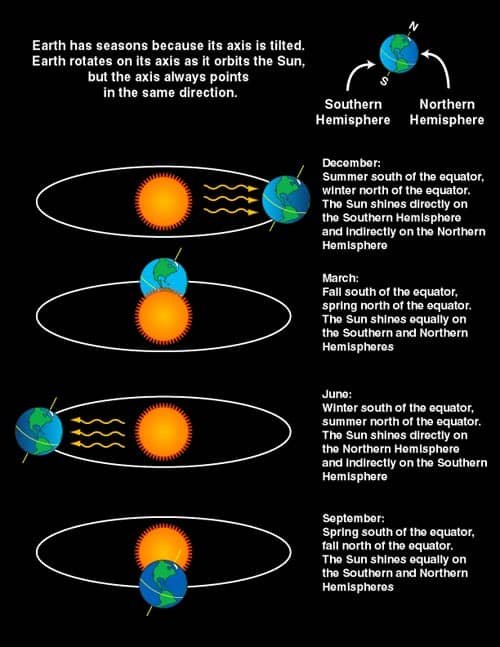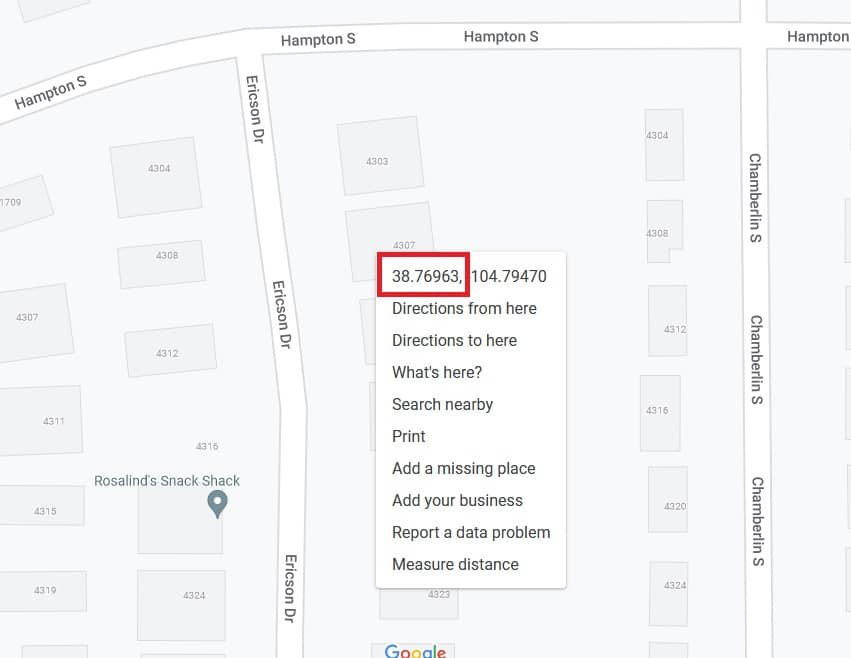- Winter: (latitude × 0.9) + 29 degrees
- Summer: (latitude × 0.9) – 23.5 degrees
- Spring and fall: latitude – 2.5 degrees
Power output for solar panel systems highly depends on solar radiation incidence over the photovoltaic (PV) modules. Installing fixed solar panels might prove profitable in many locations, but ignoring the tilt angle change of the Earth across the year will reduce the performance of the same solar panel system across the seasons. Tilting the modules to a certain degree according to the seasons can improve the solar array’s performance and generate more power.

This article explains why solar panels are affected by this phenomenon, how you can calculate the right angle to tilt your solar panels at your location, and how to optimize tilting angle for solar panel systems year-round.
Why is the Tilt Angle Important?
The day and night process is caused by the Earth completing a rotation on its axis in approximately 24 hours. I didn’t have to tell you this, but you might not know that this particular axis is tilted to a 23.5 degrees angle. Many theories attempt to explain this inclination, but no matter the cause, this angled rotation is what causes the four seasons throughout the year.

Earth is constantly rotating around the sun, completing a circuit in an average of 365 days or one year. As a consequence of the tilted angle of the Earth, some locations receive different amounts of solar radiation year-round. This fact causes the winters to be cold due to lower solar radiation and summers to be hot as the solar radiation increases.
To make the best out of the available solar radiation, compensating the tilt angle of your panels according to the different positions of the sun will optimize power output for your solar panel system.
Finding your ideal solar panel tilt
Now that you know the theory behind why we tilt our solar panels, we can go ahead and calculate our own.
Don’t be afraid. It is very easy! Using this method, you can figure out the solar panel tilt anywhere in the world.
Finding your Latitude
The ideal angle to place your solar panels is determined by how far you are from the equator. This angular distance of your location from the equator is known as latitude.
Latitude is a vital piece of information for the performance of your solar panel system, so you should learn how to determine the latitude at your location. This can be done by just right-clicking on your location in Google Maps.

In this example, we can see that the latitude is 38.7°.
If you are in the southern hemisphere, remove the ‘-‘ before the number.
Calculating the Tilt Angle for Northern Hemisphere
The best way to maximize power output for a PV system is to place solar panels facing directly south (in the northern hemisphere) or north (in the southern hemisphere). This results in PV systems having shallower tilts the further south and higher tilting angles the further north.
- Winter: (latitude × 0.9) + 29 degrees
- Summer: (latitude × 0.9) – 23.5 degrees
- Spring and fall: latitude – 2.5 degrees
If we calculate this for our previous example of 37.7° in Colorado Springs:
- Winter: (38.7° x 0.9)+29°= 64°
- Summer: (38.7° x 0.9)-23.5°=11°
- Spring and fall: 38.7°-2.5°= 36°
This is particularly useful for ground-mount solar systems that are installed with an adjustable tilt angle racking system. Optimizing for winter is important for off-grid systems. You need the solar array to power your house even under the lowest solar radiation available. Optimizing for summer is mainly for grid-tied cases in which summer electricity consumption and tariffs are much higher during this season.
Calculating tilt angle for the Southern hemisphere

We are in Sidney with a latitude of -33.8°
We must use the latitude in its absolute form and remove the ‘-‘ sign. Then repeat the same calculations as before.
Conclusion
Understanding how the inclination of the Earth and rotation around the sun affects the angle of incidence of solar radiation grants you powerful knowledge to optimize your solar panel system.
While optimal tilting angle can be obtained from the calculations in the section above, increasing the inclination of your solar panels by 10 degrees during winter or decreasing it by 10 degrees during summer results in your solar panel system generating the highest power output possible for the array. By doing this, you will have more power year-round, higher savings, and quicker ROI.
Frequently Asked Questions (FAQ)
Is it worth tilting solar panels? (Can solar panels lay flat?)
Yes, it is worth tilting solar panels since this provides the highest possible power output of the array. PV modules can lay flat and still produce power, but it is not recommended because of decreased effectiveness and water accumulation during rainfall. Solar panels can be installed in a flat position in countries very close to the Equator and produce a good amount of energy. However, installing solar panels in a flat position in subtropical regions will highly reduce energy output, especially during winter.
Is a west-facing roof OK for solar panels?
Yes, a west-facing roof will still be good enough for placing solar panels but will have up to 20% higher power losses than a south-facing roof. However, in some regions, people prefer to place their panels facing west to match their consumption patterns better and avoid injection to the grid, especially when TOU tariffs (effective during the afternoon) are in place.
How does the angle of a solar panel affect the output?
Solar panel power production is proportional to the amount of solar radiation received by the modules. South facing PV modules at an angle equal to your latitude produces the best performance for the system since modules get the highest radiation. Facing PV modules in other directions decreases the performance by 8% for south-west facing modules up to 20% for west-facing modules.
How much of a difference does tilting solar panels make?
Even if solar panels are directly facing south, tilting them at different angles varies the system’s performance. A difference of 10 degrees can vary power output performance by up to 6% depending on the time of day and location.
 I have written a book that contains all the information you need to get started with off-grid solar power.
I have written a book that contains all the information you need to get started with off-grid solar power.
With over 1,400 reviews at 4.5 stars, I can almost guarantee that this book will save you $100’s on buying the right equipment.
You can buy it here on Amazon.com

I’m an off-grid enthusiast. I created this website to give clear and straight-to-the-point advice about solar power. I’m also the author of the book ‘Off-grid solar power simplified‘. Read more about me on my about page, check out my Youtube channel, or send me a message.
I have about a 12 degree pitch to my enclosed porch and it faces west.
I am wondering what gain I might have to mount these at an angle facing south.
so ( given your example), if the panels are in landscape mode, the ‘long side’ year round angle will be 39 degrees but the ‘short side’ would be at 12 degrees.
Do the calculations change if there is a slight angle west facing?
I’m not sure what you mean. You need to install the panels at an 27° from your porch (39°-12°).
Yes, when the panels are facing west it will reduce the total amount of energy it will produce because there is less sunshine. However, this can be good if you only use energy in the evening and don’t have a battery installed.
i live in harrisburg pa and have a ground mount what angle should they be in the winter for the best output thank’s jim shenk
Hello Jim, have you read the article? It’s very easy to calculate.
My roof has quite an angle (45′) and was worried that solar power gen would be lower in Summer. I compensated for flat roof panels which were about 15′ on Renusol tubs. Then I realised in Autumn, why the hell was I worried about Summer, when all I do is export it.
Then I realised 45 degree main roof was PERFECT for Winter and I slapped 150mm mending plates and wind deflectors to increase the angle on the flat roof panels to 30 degrees and it captured the winter sun very well. What was I thinking all this time?
Indeed, optimize your tilt angle for the worst part of the year if you are off grid, this will be winter.
However, if you are on-grid and feed back into the grid, then it might be better to have more kW’s fed into the grid in summer because you will get more money from it.
This also depends on the kind of tarif you have for feed-in and usage. You have to look at your previous year’s usage and determine what will be the most cost effective for you. Keep in mind the tariff you are getting now for feed-in will not stay like that.
Hi Nick, fantastic article. Love it.
How do we work with negative latitudes?
My latitude is -26.17°.
Thus for summer tilt it will be 0.69 * (-26.17°) + 3.7 = -14,36°.
I’m assuming since I’m in the southern hemisphere I will ignore the negative and best tilt will be 15° North, right?
Thus for winter it will be (-26.17°) + 10 = -16.17°.
Since my mono roof pitch is 15° NE already, it means no adjustment during summer and during winter I must only lift the panels 1.8°?
Is my assumptions correct?
Good question I will add some more information into the article about the southern hemisphere.
Your order of calculation is wrong. You first have to multiply and then add. (0.69*26.17)+3.7=18+3.7=21.7° winter: 26.17+10=36°
all year: (21.7+36)/2=28.8° and face the panels north.
Im curious what you would recommend as my proper tilt on my panels. I live in South Thailand and my coordinates are Longitude 8°10′11.8″ Latitude 90°31′ 47.1″, Ive gotten 4 or 5 different tilts angles from different sources. Any comment on this would be great.
It depends if you are grid tied and want to optimize to get maximum feed in or for off-grid purposes. I have been to Thailand recently and there is certainly a lot of sunshine. Since you are close the equator there is not much difference between summer and winter. So you should calculate the winter position if you are off grid. Winter angle: 90°+10°=100° (almost flat)